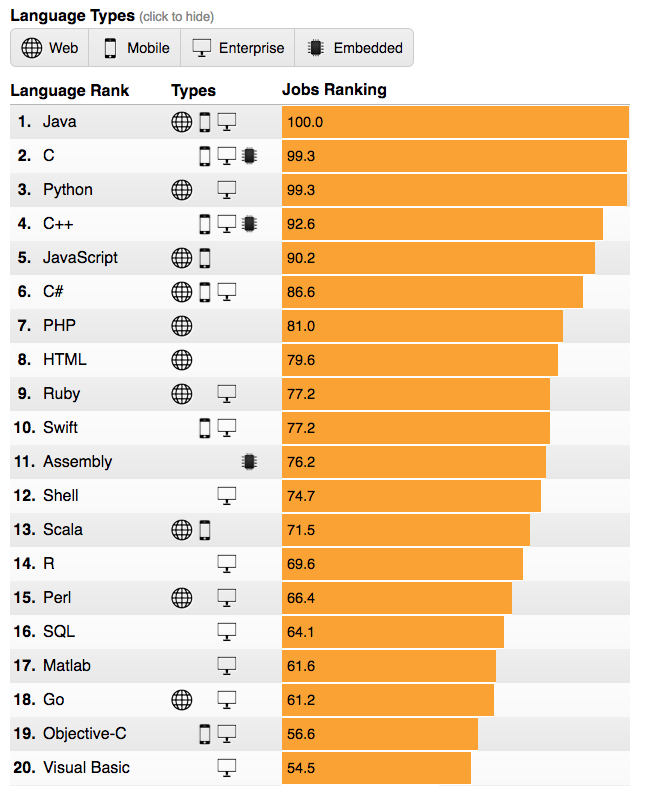Which programming languages are most popular among employers? Knowing the answer to that question can help recruiters and hiring managers find the best candidates for tech positions. For example, if a recruiting team knows that a vast majority of businesses want and need Java programmers, they can cultivate candidates with that particular skill. Conversely, if there’s little appetite out there for a little-known language, they can expend less energy finding candidates who are adept in it. Every year, IEEE Spectrum tries to determine the most popular programming languages among employers by crunching data from a number of sources; that work results in a handy list. Those sources include Google Search, Twitter, GitHub, Stack Overflow, Reddit, Hacker News, and Dice:

Java places first on this list of languages big among employers. This is unsurprising, considering how many businesses (and independent developers) rely on the language as a stolid workhorse. While other languages surpass Java in terms of metrics like speed, few have managed to eclipse its ubiquity. C, Python, C++, and JavaScript round out the top five languages. Again, all of these form the backbone of modern development. What’s more interesting are the languages further down the list—the ones that might have attracted some buzz among developers, but aren’t considered a part of the standard software-building toolkit within businesses. For example, Swift places tenth on IEEE’s list, notably ahead of its predecessor, Objective-C (which sits in nineteenth place). Go, which drew a lot of attention as TIOBE’s programming language of 2016, is in eighteenth. Kotlin (now an official Android language) failed to make the list despite a recent swell of laudatory press in venues such as Wired. R places quite high, meanwhile, despite a reputation for very specialized use. A big part of this is reach. Java, for example, is a language equally suited for the Web, mobile development, and enterprise use; C is found throughout the mobile and enterprise, as well as embedded systems. Contrast that with languages further down the list, which might prove useful only in a limited context—enterprise-level data analysis, for example, or mobile—and you can see why those at the very top have dominated for years. As Swift demonstrates, it’s possible for a language to accelerate rapidly into the upper echelons, thanks to factors such as corporate backing, effective support, and the open-source community. As more and more businesses embrace the platform, a feedback loop of sorts is created; it’s very hard for a language that’s climbed far to fall fast. For recruiters who are just starting to familiarize themselves with the intricacies of various programming languages, this IEEE list is a good place to start. There’s also the Dice Salary Survey, which shows how much tech pros with certain skills can earn.



